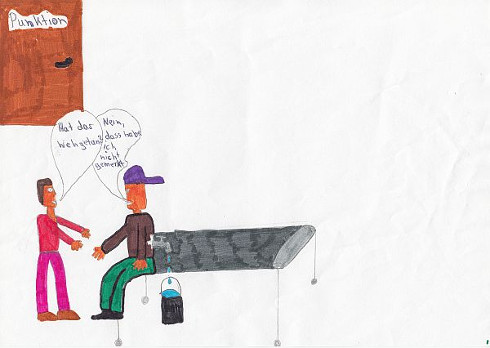Cerebrospinal fluid (CSF) withdrawal
Author: PD Dr. med. Gesche Tallen, Editor: Maria Yiallouros, Reviewer: Prof. Dr. med. Dr. h. c. Günter. Henze, English Translation: Hannah McRae, Last modification: 2015/04/28 https://kinderkrebsinfo.de/doi/e75138
The brain and spinal cord (central nervous system, CNS) consist of very delicate tissue. For protection from damage, as well as for blood and nutrient supply, the CNS structures are surrounded by a special fluid known as cerebrospinal fluid (CSF).
Any affection of the central nervous system by medical disorders, such as cancer or infections, can be diagnosed by cerebrospinal fluid analysis; therefore CSF sampling is performed when involvement of the CNS is suspected in some way or another.

Lumbar puncture seen by a child
Cerobrospinal fluid samples are obtained by lumbar or ventricular puncture.
During CSF taking procedures, a parent of the patient or other adult person, whom the child trusts, should be present to comfort the child and to help keep the patient in optimal position. Both lumbar and ventricular puncture are routine procedures for the doctors that do not take long. Complications are rare. Some patients may develop a headache, which can be prevented by lying down for one to two hours after the procedure.
Lumbar or ventricular punctures are carried out mainly for staging and during treatment of:
- leukaemias
- lymphomas
- tumours of the central nervous System (CNS tumours)
